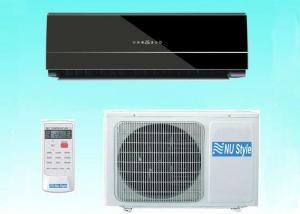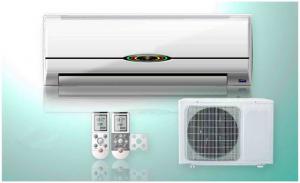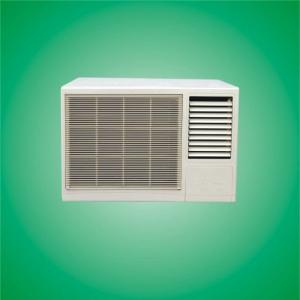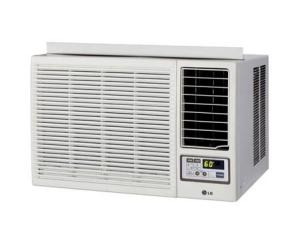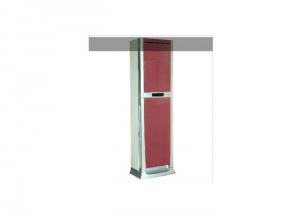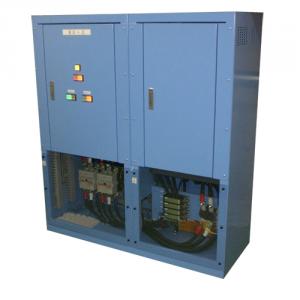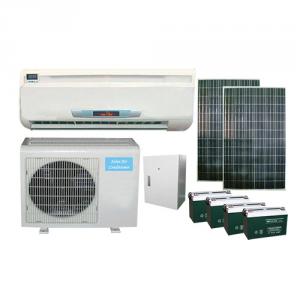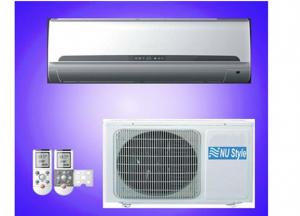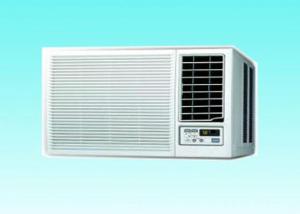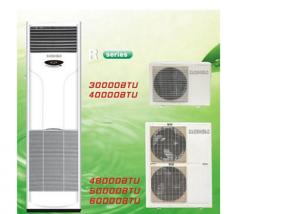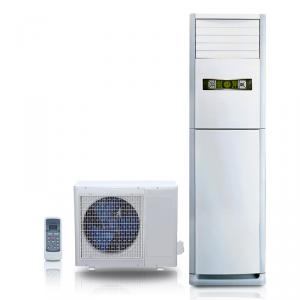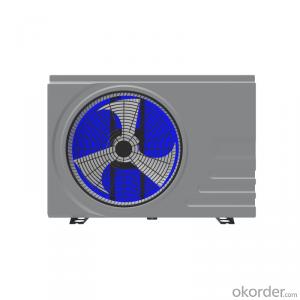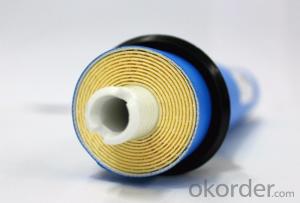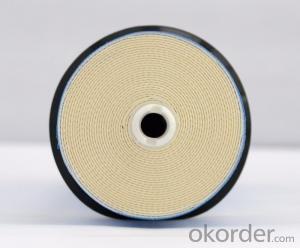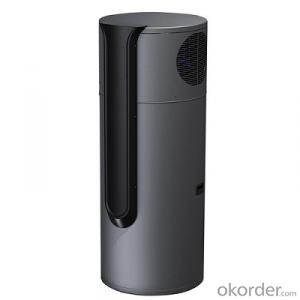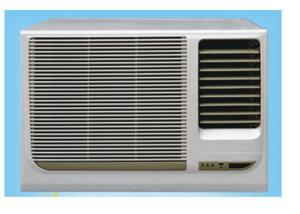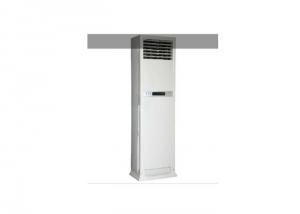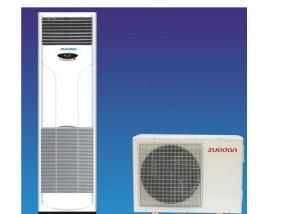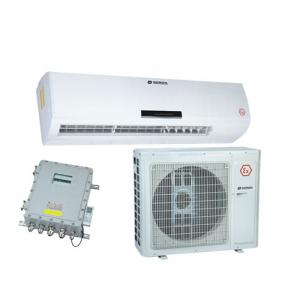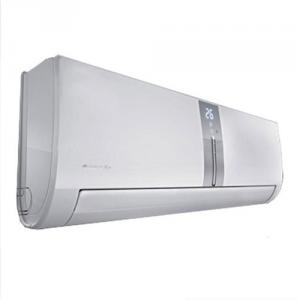ceiling conceal ducted air conditioner (install ducted air conditioner)
- Loading Port:
- Shanghai
- Payment Terms:
- TT OR LC
- Min Order Qty:
- 1 unit
- Supply Capability:
- 5 unit/month
OKorder Service Pledge
OKorder Financial Service
You Might Also Like
| Condition: | New | Brand Name: | CNBM | Place of Origin: | JIA,china China (Mainland) |
| Use: | Room | Power Source: | Electrical | Power Type: | AC |
| Type: | Central Air Conditioners | Cooling/Heating: | Cooling/Heating | Certification: | CE |
| Capacity (btu): | 9000 | COP: | 2 | EER: | 3.4 |
| Power (W): | 2300 | Voltage (V): | 220 | Model Number: | FRD35-B |
| color: | Gray | warranty: | 18months | function: | cooling/heating |
| power: | 2300 | voltage: | 220 | model: | FRD35-B |
| brand: | chun lan | name: | ceiling conceal ducted air conditioner |
Packaging & Delivery
| Packaging Detail: | safe carton package for export |
| Delivery Detail: | 10days |
Specifications
install ducted air conditioner
1. Low-noise design air conditioner
2. Volume thin,
3,high effcient
4.space-saving
install ducted air conditioner
ceiling conceal ducted air conditioner (install ducted air conditioner)
Product Description
1. Low-noise design
2. Volume thin, space-saving
3. Invest in small, low maintenance costs
4. Elegant and gorgeous, high-grade to enjoy
5. The introduction of new wind, and to improve indoor air quality
6. Reliability
7. Comfort is good
8. Microcomputer control Operation is simple and convenient device
- Q:Is the household air conditioner, I here are generally only use in the summer, winter will not use?
- Winter best meets once every two months, electricity heating (compressor) twenty minutes before opening, according to the remote boot again! Once a half an hour! Air conditioning often period without compressor 'four-way valve will card cylinder, jam!
- Q:What use of gree air conditioning compressor
- In household air conditioner inside most of the products adopt gree own production ling of compressor, only some high-end or efficient use of other brands of compressors, such as mitsubishi, guangzhou or Shanghai Hitachi compressor. In commercial air conditioning, some high-end commercial online is guangzhou Hitachi compressors, some low-end more online, such as household central air conditioning, little league more monomer is online using their ling of compressor; Also have some ark products such as the valley of the compressor wheel. Anyhow is gree gradually in switching your ling of compressor, by the reliability and the efficiency of the compressor problem, some high-end products adopt Japanese brand compressor
- Q:Can air conditioners be controlled remotely through a smartphone?
- Yes, many modern air conditioners are equipped with smart technology that allows them to be controlled remotely through a smartphone. This feature provides convenience and flexibility in adjusting temperature settings, scheduling, and monitoring energy usage, all from the comfort of your smartphone.
- Q:How do you clean the fan blades on an air conditioner?
- To clean the fan blades on an air conditioner, start by turning off the unit and unplugging it for safety. Gently remove the front cover or grille that grants access to the fan blades. Use a soft brush or vacuum cleaner with a brush attachment to remove any loose dust or debris from the blades. For more thorough cleaning, dampen a cloth with a mild detergent or cleaning solution and wipe the blades carefully. Avoid getting the motor or other electrical components wet. Once cleaned, allow the blades to dry completely before reattaching the cover or grille and plugging the unit back in.
- Q:Air conditioning blows out hot air and cold air is how come?
- Generally the indoor heating or cooling process after the wind circulation enter indoor, if it is fresh air of air conditioning, fresh air into the room, there will be department would, of course, also have a department to indoor and outdoor wind ruled out
- Q:Air conditioning is out of the air come in, or only in indoor cycle?
- Just thermal cycling The air is not circulating There is a heat exchange effect Outside of the fan is inside the heat dissipation is refrigeration group is the air cycle machine I'm repair air conditioning
- Q:What is the air conditioning air filter
- Equipment room dedicated air conditioning filters are mainly used for air conditioning and ventilation system of the filter, purify air conditioning clean room return air filter, high efficiency filter, filter, filter of air compressor. Air conditioning filters are divided into a lot of kinds, home air conditioning air filter is v that nylon filter at the top of the supply air fan volute. Air filter is divided into the central air conditioning, the early work, in effect, and high efficiency, high level 4, its material shapes.
- Q:Can an air conditioner cool multiple rooms?
- An air conditioner has the ability to cool multiple rooms depending on its capacity and the building's layout. Central air conditioning systems are designed specifically for cooling multiple rooms simultaneously by circulating cool air through a network of air ducts. These systems are commonly installed in houses, offices, and other commercial buildings due to their significant cooling capacity. Moreover, certain portable air conditioners can cool multiple rooms if they possess sufficient cooling power and are strategically positioned to direct airflow towards different areas. However, it is crucial to consider the rooms' size and insulation, as well as any potential obstacles that might hinder the airflow, in order to guarantee optimal cooling efficiency.
- Q:How do I prevent ice buildup on my air conditioner coils?
- To prevent ice buildup on your air conditioner coils, there are a few steps you can take: 1. Regularly clean and maintain your air conditioner: Make sure to clean the filters, evaporator coils, and condenser coils regularly. Dust, dirt, and debris can accumulate on the coils, reducing airflow and causing ice formation. Use a soft brush or a vacuum cleaner to remove any buildup. 2. Ensure proper airflow: Check that all vents and registers are open and unobstructed. Restricted airflow can cause the evaporator coils to become too cold, leading to ice formation. Additionally, ensure that there are no furniture or objects blocking the airflow around the indoor and outdoor units. 3. Check for refrigerant leaks: Low refrigerant levels can cause the evaporator coils to freeze. If you notice ice buildup frequently, it may be a sign of a refrigerant leak. In such cases, it is advisable to call a professional HVAC technician to identify and fix the leak. 4. Maintain a suitable thermostat setting: Adjust your thermostat to a temperature that is not too low. Extremely low temperatures can cause the evaporator coils to freeze. Aim for a comfortable temperature range to prevent ice buildup. 5. Use a programmable thermostat: A programmable thermostat can help regulate the temperature and prevent the system from running excessively, which can lead to ice formation. Set the thermostat to maintain a consistent temperature and avoid drastic temperature fluctuations. 6. Keep the area around the outdoor unit clean: Ensure that the outdoor unit is free from debris, such as leaves, grass, or dirt. Clear any vegetation or other obstructions around the unit to allow proper airflow. 7. Schedule regular maintenance: It is advisable to have your air conditioner inspected and serviced by a professional technician at least once a year. They can identify any potential issues and perform necessary maintenance to keep the coils clean and prevent ice buildup. By following these preventive measures, you can minimize the risk of ice buildup on your air conditioner coils and ensure optimal performance of your cooling system.
- Q:How do you check the thermostat sensor on an air conditioner?
- To inspect the thermostat sensor on an air conditioner, the following steps can be followed: 1. Find the thermostat: Typically, the thermostat can be found on the interior wall near the air conditioning unit. It is a small device equipped with buttons or a digital display. 2. Power off: Prior to examining the thermostat sensor, it is crucial to turn off the power to the air conditioner. This can be achieved by either switching off the circuit breaker or unplugging the unit. 3. Remove the thermostat cover: Carefully detach the cover of the thermostat by unscrewing or sliding it off. Be cautious not to cause any damage to the wires or components. 4. Identify the sensor: Once the cover is removed, the thermostat sensor will become visible. It is a small, cylindrical metallic object resembling a bulb. Typically, it is situated near the front of the thermostat. 5. Clean the sensor: Utilize a soft cloth or a cotton swab dipped in isopropyl alcohol to cleanse the thermostat sensor. Gently wipe away any accumulated dirt, dust, or debris. Ensure that the sensor is completely dry before proceeding. 6. Check the sensor connection: Inspect the wiring connections of the sensor to ensure they are secure and not loose. If any loose or damaged wires are found, they may require repair or replacement. 7. Reassemble and test: After cleaning the sensor and inspecting the connections, reassemble the thermostat cover. Restore power to the air conditioner and set the thermostat to the desired temperature. Allow a few minutes to observe if the air conditioner begins functioning correctly. If the air conditioner continues to exhibit unexpected behavior or if there is suspicion of a faulty or malfunctioning sensor, it is advisable to seek the assistance of a professional HVAC technician who can accurately diagnose and address the issue.
1. Manufacturer Overview |
|
|---|---|
| Location | |
| Year Established | |
| Annual Output Value | |
| Main Markets | |
| Company Certifications | |
2. Manufacturer Certificates |
|
|---|---|
| a) Certification Name | |
| Range | |
| Reference | |
| Validity Period | |
3. Manufacturer Capability |
|
|---|---|
| a)Trade Capacity | |
| Nearest Port | |
| Export Percentage | |
| No.of Employees in Trade Department | |
| Language Spoken: | |
| b)Factory Information | |
| Factory Size: | |
| No. of Production Lines | |
| Contract Manufacturing | |
| Product Price Range | |
Send your message to us
ceiling conceal ducted air conditioner (install ducted air conditioner)
- Loading Port:
- Shanghai
- Payment Terms:
- TT OR LC
- Min Order Qty:
- 1 unit
- Supply Capability:
- 5 unit/month
OKorder Service Pledge
OKorder Financial Service
Similar products
New products
Hot products
Hot Searches
Related keywords


